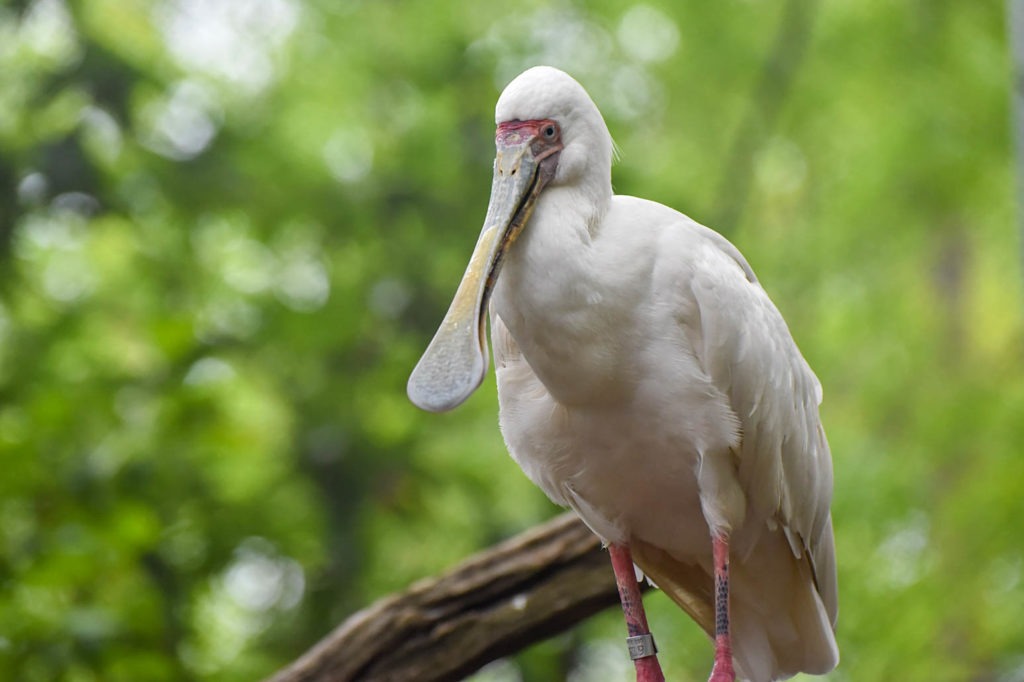Overview
“Where I live”
The African spoonbill is common throughout most of sub-Saharan Africa. It can be found on inland waters such as lakes, rivers, and marshes and is mostly absent from arid and coastal regions. The African spoonbills at the Maryland Zoo can be found in the African Aviary.
“How I live there”
African spoonbills are shy towards humans and will quickly fly off. They are gregarious in the company of other birds, though, and usually gather in small groups of 3 to 30. They may rest along shore in large groups of up to 1,000 with other birds such as ibises (to which they are closely related), herons, and flamingoes.
African spoonbills feed during the day. They wade slowly through shallow water near shore sweeping their namesake bills back and forth. When they come upon something tasty, like a small fish or a water beetle, they snap it into the spoon of their bill and swallow with a backward jerk of the head.
In the evening, African spoonbills return to communal roosts in trees or reed beds.
“Making my mark”
The African spoonbill is a distinctive long-legged wading bird. It is mostly white with red legs and bare red facial skin. It has a long, grayish, spatula-like bill.
“What threatens me”
African spoonbills are vulnerable to a variety of predators, especially when young, but the most general threat to the species is habitat loss due to the drainage of wetlands in some parts of its range.
Raising Young
African spoonbills nest colonially with other species, usually in groups of 5-20 pairs but sometimes in groups of up to 250 pairs or more. Mated pairs build flat, oval nests of sticks and reeds situated over or near water on partly submerged trees, in bushes or reeds, or on a rocky ledge. The nests often are lined with leaves.
Females lay clutches of 3-5 eggs. Both parents take turns incubating the eggs, with the female sitting most of the day on the nest and the male relieving her at night. The eggs hatch after 25 to 29 days, and both parents care for the hatchlings for another 3 to 4 weeks until they are ready to leave the nest and be independent. Within another 4 weeks, the young spoonbills begin to fly. Parents offer them food until they fledge. The young bird places its head inside its parent’s mouth and receives regurgitated food. Yum!
Conservation
African spoonbills have an extensive range and stable population throughout southern Africa. They are classified as a species of least concern by the IUCN, the world’s leading conservation organization.
Taxonomy
- Kingdom: Animalia
- Phylum: Chordata
- Subphylum: Vertebrata
- Class: Aves
- Order: Pelecaniformes
- Family: Threskiornithidae
- Genera: Platalea
- Species: alba


